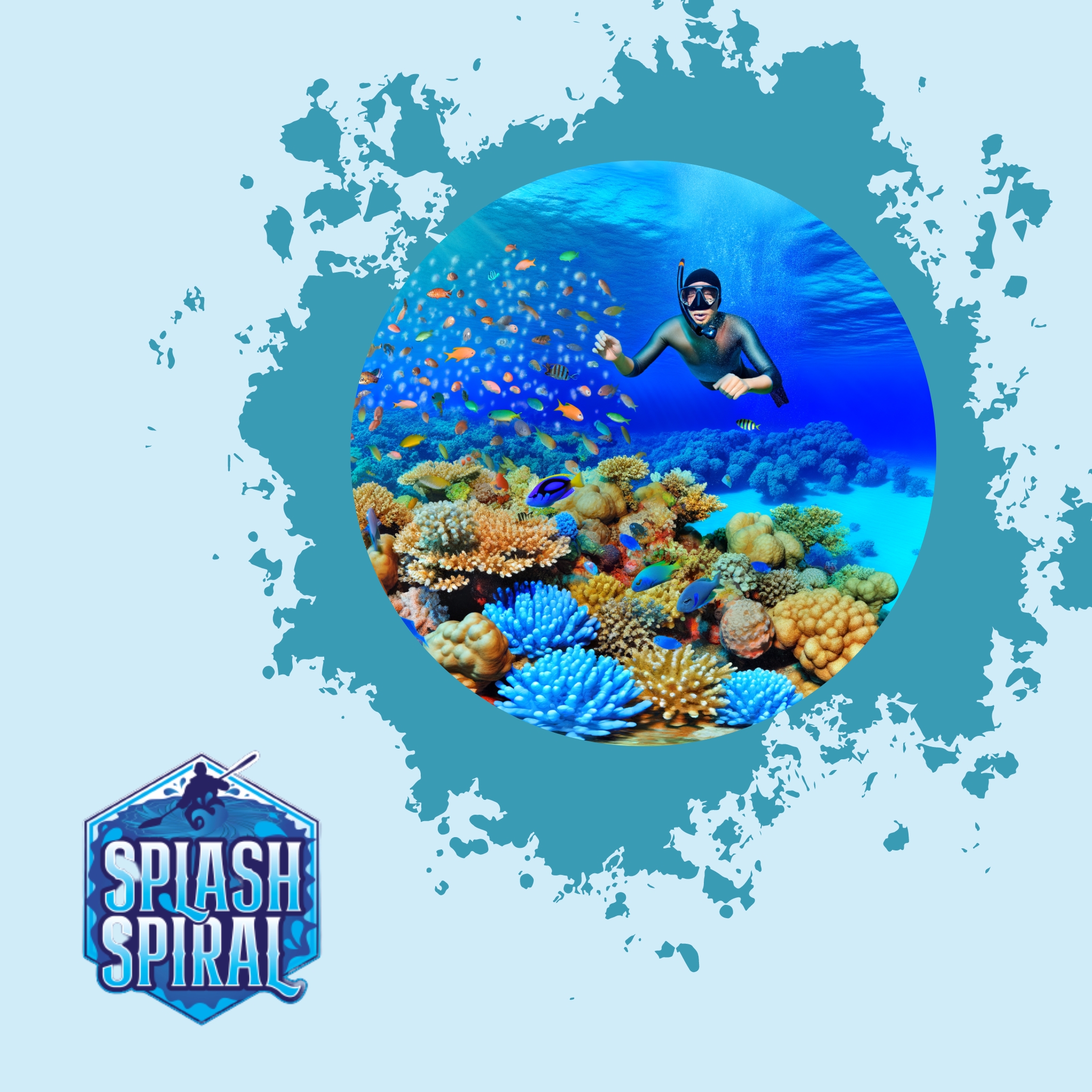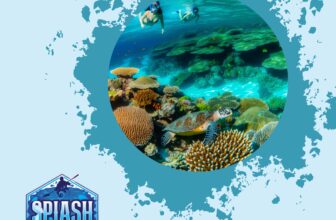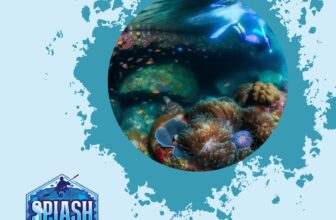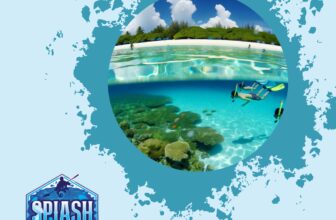
Snorkeling the Great Barrier Reef is a dream for many marine enthusiasts. Whether you're a beginner snorkeler or someone itching to start this aquatic adventure, knowing when to visit is key to ensuring you have the best experience with clear waters and vibrant marine wildlife. Let’s dive in and explore when you should plan your trip for optimal conditions.
Understanding the Optimal Seasons
When planning your snorkeling trip to the Great Barrier Reef, understanding the difference between the wet and dry seasons can make a big difference in your experience. The wet season, running from November to April, often means more rainfall, higher humidity, and a chance of cyclones. This can lead to reduced visibility in the water—a bit of a bummer if you're hoping for clear views of the vibrant coral and marine life below. On the flip side, fewer tourists venture out during this time, so you might enjoy a more peaceful experience and potentially score deals on tours.
The dry season, from May to October, offers more stable weather with less rain and lower humidity. This typically translates to clearer, calmer waters—a snorkeler's dream! You’ll also find that this period aligns with peak tourist seasons. More tourists mean lots of opportunities to make new snorkeling pals, but it also means busier reefs and increased demand for accommodations and tours. Booking in advance during this time is practically a must to ensure you get your choice of tours and spots to stay.
Understanding these seasonal nuances will help you decide when to swap out your everyday routine for flippers and a snorkel. Whether you prefer fewer crowds or optimal water conditions, there’s a time that suits every snorkeler’s needs.
The Dry Season: A Prime Time for Snorkeling
If you're setting your sights on snorkeling the Great Barrier Reef, the dry season, from May to October, is your best bet. During these months, the reef is at its most inviting, offering reliably favorable conditions for beginners and seasoned snorkelers alike. Here's why this period tops the list for optimal underwater adventures.
Months to Consider
The stretch from May to October is renowned for its calm seas and clear skies. May marks the beginning of this period, providing a gentle transition from the wetter months. As you move into the core months of June to August, the weather stabilizes. This is when you can expect consistently calm waters, making it easier to explore the reef's vibrant tapestry without battling strong currents or murky conditions.
Weather Conditions
Why is the dry season so ideal? It's largely thanks to the weather—picture mild temperatures, low humidity, and minimal rainfall. The lack of rain translates to fewer run-offs from the mainland, which means the water remains crystal clear for snorkeling. You're also likely to experience consistent sunshine, which makes the underwater world more vivid and breathtaking. The gentle trade winds ensure a comfortable climate, rarely swaying beyond the 20s°C (68-78°F), which is perfect for slipping into a wetsuit and diving into the action.
In summary, planning your snorkel adventure during the dry season not only aligns you with optimal sea conditions but also with a time when nature seems to paint the ocean with its most brilliant hues. Whether you're a first-timer or someone eager to delve into snorkeling, this period promises encounters you'll reminisce about for years to come.
Teams for Captivating Coral Reefs and Vibrant Marine Wildlife
If you're gearing up for a snorkeling adventure in the Great Barrier Reef, timing is everything, especially if you want to witness the marvel of coral reefs and bustling marine life.
Coral Spawning: One of the most spectacular events you might want to catch is the annual coral spawning. This phenomenon usually occurs after the full moon in late October or November. Picture this: the reef turning into a snow globe, but instead of snow, it's filled with floating coral eggs and sperm. The ocean transforms into a living, breathing ecosystem, offering a dreamlike snorkeling experience that's rare to see.
Marine Wildlife Activity: The Great Barrier Reef is not just about the coral; it's a lively habitat home to thousands of species. From June to September, humpback whales make their grand appearance as they migrate through the reef. It’s a mesmerizing sight, and you might even hear their haunting calls underwater. Sea turtles are another highlight. While they're active year-round, nesting season runs from November to March. Imagine snorkeling over a sandy seabed and spotting a turtle gliding gracefully just a few feet beneath you—it's a beginner snorkeler's jackpot.
These seasonal highlights not only add a splash of vibrancy to your snorkeling trip but also offer a natural spectacle that's both educational and awe-inspiring. Keep these timings in mind when planning your trip to make sure you encounter the reef's living wonders head-on.
Snorkeling Conditions: Clear Waters and Visibility
When it comes to snorkeling, visibility is everything. In the Great Barrier Reef, water clarity varies with the seasons, which can make or break your underwater adventure.
Seasonal Water Clarity
- Dry Season (May to October):
- Best for visibility
- Calm waters
- Minimal rainfall
During these months, the low rainfall minimizes sediment disturbance, providing crystal-clear views of the reef and its vivid inhabitants.
Timing Your Dive
For an optimal snorkeling experience, timing is crucial:
- Morning hours:
- Wind is typically calmer
- Early sunlight accentuates the reef's colors
- Marine wildlife is more visible
As the day progresses, increased wind can reduce visibility by disturbing the water’s surface.
Maximizing Your Snorkeling Adventure
Whether you're just getting into snorkeling or planning your first outing, prioritizing clear water conditions will enhance your experience:
-
Monitor Weather Forecasts:
- Keep an eye on forecasts to plan your dives during optimal conditions.
-
Early Dives:
- Aim for early morning sessions to enjoy the clearest water.
For more specifics on visibility, you can dive deeper into this snorkeling visibility guide.
Strategic Planning: Snorkeling Tours and Charters
When it comes to snorkeling in the Great Barrier Reef, your choice of tour can make a world of difference. As a beginner, the plethora of options might seem overwhelming, but here’s a simple breakdown to guide you.
Types of Tours Available
Before you take the plunge, consider the types of snorkeling tours you can choose from:
-
Group Tours
- Great for meeting fellow snorkelers.
- Often at a lower price point.
- Usually have set itineraries.
- Offer a lively experience due to a larger number of participants.
-
Private Tours
- Offers a more intimate experience.
- Allows for personalized itineraries.
- Provides one-on-one time with a guide.
- Ideal for beginners or those wanting a relaxed adventure.
Advanced Booking
Planning ahead is essential, regardless of the tour type you choose. Note the following:
- Peak Months: June to August.
- Booking Tips:
- Secure your spot early to avoid missing out.
- Book two to three months in advance for better rates and guaranteed availability.
Exclusive Adventures
For those seeking a unique experience, consider:
- Private Snorkeling Charters
- Explore off-the-beaten-path spots.
- Enjoy a more serene and exclusive encounter with marine life.
- Customize the trip to your preferences.
- While more costly, these tours offer tranquility and the chance to tailor your experience.
- For further details, read our guide on private snorkeling charters.
Choosing the right snorkeling tour ensures that your Great Barrier Reef adventure is everything you’ve dreamed of and more. By considering your preferences and planning ahead, you can maximize your time in this underwater paradise.
Off-Peak Adventures: Pros and Cons
When considering a snorkeling trip to the Great Barrier Reef, you might be tempted to go during the off-peak months. Visiting outside of the high season can offer distinct benefits. One of the most attractive perks is the relative solitude you'll experience. With fewer tourists around, you'll enjoy a more serene experience both in the water and on land. This means less crowded snorkeling spots, making it easier to find quiet moments among the vibrant marine life.
Another upside is the potential for lower travel and accommodation costs. Many airlines and hotels offer discounts during off-peak times, which can stretch your travel budget further. With fewer people competing for space, you might even be able to snag better deals on tours and charters, allowing you to explore the reef more comprehensively without breaking the bank.
However, off-peak travel does come with its share of challenges. The main concern is the weather. The off-peak season typically corresponds with the wet season, bringing increased rainfall and a higher chance of storms. This can affect water clarity, making snorkeling conditions less predictable. Choppy seas might hinder access to certain areas, and rainy days could limit your time in the water.
Ultimately, if you're flexible and prepared for variable weather, visiting during the off-peak months can be rewarding. You'll need to weigh these pros and cons based on your priorities and travel preferences. While you risk encountering rain, the trade-off might be worth it for a more personal and affordable Great Barrier Reef adventure.
Conclusion
Visiting the Great Barrier Reef for snorkeling can be a truly transformative experience, but timing your trip right is crucial for making the most of it. The dry season, spanning from May to October, is often the best bet for beginners and seasoned snorkelers alike due to its stable weather and clear waters. However, don't discount the allure of off-peak months if you're after a quieter, potentially budget-friendly adventure.
Regardless of when you choose to go, understanding the reef's seasonal rhythms will enhance your journey. Be it the spectacular coral spawning or spotting active marine life, each period carries unique wonders waiting to be discovered. Spend time considering tour options and plan your itinerary wisely—it'll pay off in unforgettable underwater memories.
So, gear up and dive in. With a bit of planning, your snorkeling venture into the Great Barrier Reef can be every bit as vibrant and mesmerizing as you've imagined. Happy snorkeling!







